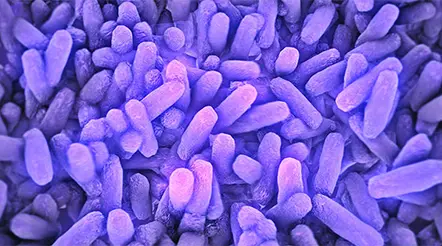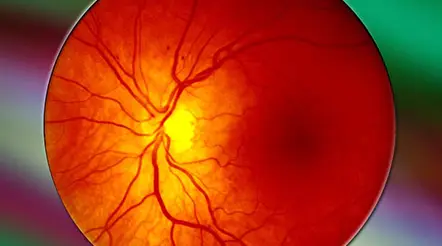


Introduction
Ann Kimball and John W. Johnson Center for Cellular Therapeutics at Houston Methodist
Houston Methodist Dr. Mary and Ron Neal Cancer Center
The Food & Health Alliance within the Houston Methodist Lynda K. and David M. Underwood Center for Digestive Disorders, Immunology Center and the Fondren Inflammation Collaborative
Houston Methodist Cockrell Center for Advanced Therapeutics
Paula and Joseph C. “Rusty” Walter III
Translational Research Initiative
Jerold B. Katz Academy of Translational Research
Infectious Diseases Research Fund
George and Angelina Kostas Research Center for Cardiovascular Medicine
New Endowed Chairs Positions
EnMed
Center for Bioenergetics
result
Clinical Research
Outcomes, Quality and Healthcare Performances
Restorative Medicine
Precision Medicine
Science in Service
of
Medicineresult
President's letter
2022 Metrics
Cycle of Translation
Visionary Gifts of Hope


Introduction

Ann Kimball and John W. Johnson Center for Cellular Therapeutics at Houston Methodist

Houston Methodist Dr. Mary and Ron Neal Cancer Center

The Food & Health Alliance within the Houston Methodist Lynda K. and David M. Underwood Center for Digestive Disorders, Immunology Center and the Fondren Inflammation Collaborative

Houston Methodist Cockrell Center for Advanced Therapeutics

Paula and Joseph C. “Rusty” Walter III Translational Research Initiative

Jerold B. Katz Academy of Translational Research

Infectious Diseases Research Fund

George and Angelina Kostas Research Center for Cardiovascular Medicine

New Endowed Chairs Positions

EnMed

Center for Bioenergetics

From Discovery to Clinic


What is "Discovery to Clinic"?

Clinical Research


Houston Methodist Conducts First-Ever Study into a Challenging Situation

Can Regulating Cellular Aging Mitigate Both Cancer and Heart Disease?

Innovative Treatment for Chronic Rhinitis is Safe and Effective


Masters of Disguise: Glioblastomas Trick the Immune System by Masquerading as Reproductive Tissue
Improved Options for Patients with Severe Retinal Vascular Disease

A New FDA-Approved Treatment for Sufferers of Chronic Constipation

Houston Methodist joins the Gulf Coast Consortia

Outcomes, Quality and Healthcare Performance


New Findings on RNA Helicases May Yield New Intestinal Disease Therapy

Houston Methodist and Pennsylvania State University Collaborate on a Smartphone App That Could Revolutionize Stroke Diagnosis

New Frontiers to Improve Cardiovascular Medicine and Disease Management

Ongoing Lessons in a Pandemic

Transplants can Boost Survival Rate of Patients with Unresectable Liver Cancers

Telehealth Video Visits During the COVID-19 Pandemic – a Glimpse into the Future?

SARS-CoV-2 Induced Chronic Oxidative Stress and Endothelial Cell Inflammation May Increase Likelihood of Cardiovascular Diseases and Respiratory Failure

Restorative Medicine


Lessening Pain After Knee Replacement Surgery

Do Motor Neurons First Die in the Brain? Study Provides Clues about ALS Origins

Bringing Back Hand Function in People with Complete Spinal Cord Injury

Novel Vascular Engineering Platforms Are a Boon for Bioengineering

Ultra-high-Resolution Scanner Reveals if Knee Injury Advances to Osteoarthritis

Houston Methodist Model Demonstrates Reversal from Heart Failure State, Creating the Potential for Innovative Treatment Avenues

Precision Medicine


Rapidly Scalable, All-Inducible Neural Organoids Could Facilitate Drug Screening for Neurological Diseases

Importance of the Coronary Artery Calcium Score in Risk Assessment and Prevention of Atherosclerotic Cardiovascular Disease

COVID-19 Infection in Crucial Brain Regions May Lead To Accelerated Brain Aging

Interleukin 9 Secreting Polarized T Cells Show Potential in Solid and Liquid Tumor Treatment

The NanoLymph: Implantable. Adaptable. Anti-cancer


Innovative Treatment for Chronic Rhinitis is Safe and Effective

Chronic rhinitis involves constant post-nasal drip, congestion, nasal/throat itching and sneezing. Often but not always associated with allergies, chronic rhinitis is a significant global health problem costing billions of dollars each year in direct and indirect costs. Also, this chronic condition often deleteriously impacts one’s quality of life. Symptom management with medications can help, but surgery to lyse the posterior nasal nerve (PNN) is frequently needed in those for whom medications prove ineffective. Recently, less invasive options have been developed such as cryosurgical ablation and endoscopic laser ablation. Experts at Houston Methodist evaluated the efficacy of a minimally invasive in-office procedure that could be a game-changer for those afflicted with chronic rhinitis.

Mas Takashima, MD
Mas Takashima, MD, Chair of the Department of Otolaryngology – Head & Neck Surgery, specializes in minimally invasive sinus procedures with research focused on chronic rhinosinusitis and chronic rhinitis. In 2021, Takashima and his team published an article involving a multi-institutional trial to determine the safety and efficacy of temperature-controlled radiofrequency (RF) neurolysis of the PNN area for the treatment of chronic rhinitis.
RF devices are widely used in nasal therapies, but Takashima’s study tested a new variation of an RF device for chronic rhinitis: one that is temperature controlled. A temperature-controlled RF device is a device that monitors tissue temperature and automatically adjusts the RF current to maintain the appropriate temperature, thus reducing injury of nearby tissue. Such a device has been demonstrated as safe and effective when used to treat nasal obstruction. To see if this technology could benefit those with chronic rhinitis, Takashima initiated a prospective, multicenter, single-blinded, randomized controlled trial (RCT) using the RhinAer System. This system is an RF device designed to treat both runny nose and congestion with a single, minimally invasive treatment performed in the doctor’s office. The device monitors tissue temperature and automatically adjusts the RF current to maintain 60°C, the appropriate treatment temperature.
The primary endpoint is the responder rate at three months post-treatment, where a responder was defined as a patient with a 30% decrease in reflective total nasal symptom score (rTNSS) from baseline. Patients are being followed through two years post-treatment. Preliminary results of the longer-term studies show continued improvement of chronic rhinitis symptoms with time. Secondary endpoints were the mean change in rTNSS from baseline through three months and the rate of device- and procedure-related serious adverse events through three months. No serious adverse events with any potential relationship to the device and/or procedure occurred during the trial.
The protocol did not limit or prescribe medication use or changes in medication, though medication use was tracked over time in trial participants. This makes the results more likely to reflect accurate real-world device effect outcomes.
Takashima’s RCT demonstrates that temperature-controlled neurolysis of the PNN area is safe and effective in decreasing rhinorrhea and congestion and as such reduces the overall symptom burden of chronic rhinitis. In June of 2022, Takashima published a follow-up article showing that effectiveness of the treatment continued for at least 12 months.
















